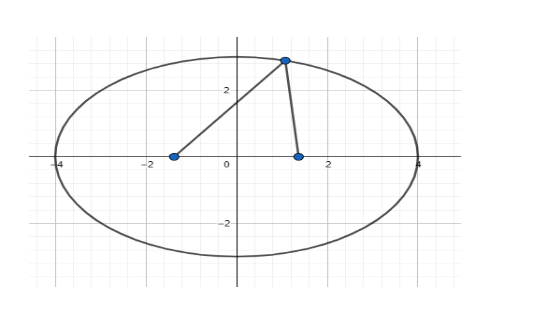Question
Question: The sum of focal distances of any point on the ellipse \(9{{x}^{2}}+16{{y}^{2}}=144\) is A.32 B...
The sum of focal distances of any point on the ellipse 9x2+16y2=144 is
A.32
B.18
C.16
D.8
Solution
Hint: Start by converting the equation of the ellipse given in the question to its standard form and using the property that foci of the ellipse represented by a2x2+b2y2=1 are (ae,0) and (-ae,0). Now you just have to use the property of the ellipse that the sum of the distance of any point lying on the ellipse from its two foci is equal to twice the length of the semi-major axis.
Complete step-by-step answer:
Starting by drawing a rough diagram:

Now let us convert the equation given in the question, to the standard form of ellipse, i.e., to the form a2x2+b2y2=1 , where a and b are the length of the semi-major and semi-minor axis of the ellipse.
9x2+16y2=144
⇒1449x2+14416y2=1
⇒16x2+9y2=1
Now, we know that the square root of 16 and 9 are 4 and 3, respectively. Also, as a>b, i.e., 4>3, we can say that the length of the semi-major axis is equal to a, i.e., 4.
Now, we know that the sum of the distance of any point lying on the ellipse from its two foci is equal to twice the length of the semi-major axis. S, the answer to the above question is 2a=2×4=8 .
Therefore, the answer to the above question is option (d).
Note: In such questions, the key is to convert the equation given to the standard form and identify the length of the semi-major axis. Also, you must know the required formulas related to the figure and the different forms in which you can represent different geometrical shapes, specially related to conics. There is a great possibility that students forget to take the square root of 16 and 9 and take the value of a = 16 instead of 4. This affects the final answer and students might choose option (a).
